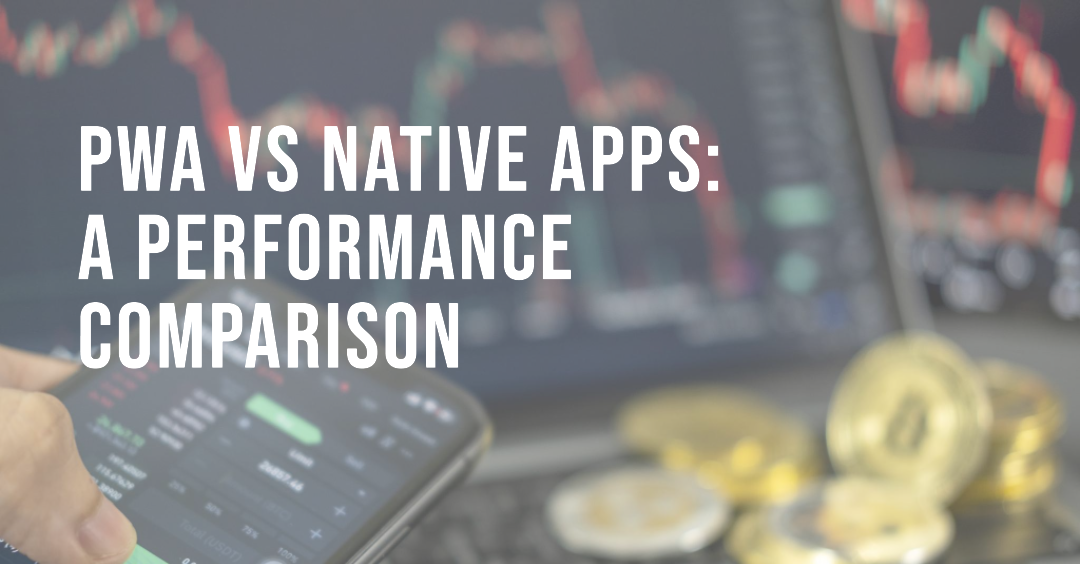PWA vs Native Apps: Which Performs Better?
In today’s digital age, businesses are constantly seeking innovative ways to engage with their customers and provide an exceptional online experience. One such innovation that has gained significant traction in recent years is Progressive Web Apps (PWAs). These web applications combine the best of both worlds, offering the speed and reliability of a native app while maintaining the accessibility of a website. In this article, we’ll explore the numerous benefits of Progressive Web Apps and why they are becoming increasingly popular among businesses and users alike.
1. Introduction
Progressive Web Apps have revolutionized the way businesses interact with their audience. They offer a myriad of advantages that traditional websites and native apps struggle to match. Let’s delve deeper into these benefits.
2. What Are Progressive Web Apps (PWAs)?
PWAs are web applications designed to deliver a seamless experience across various devices and platforms. They are built using standard web technologies such as HTML, CSS, and JavaScript.
3. Speed and Performance
PWAs are known for their lightning-fast loading times. Users can access content almost instantly, even in low-network conditions. This speed significantly enhances user satisfaction and encourages them to stay on the platform.
4. Offline Access
One of the standout features of PWAs is their ability to work offline. Users can still browse and interact with the app’s content even when they are not connected to the internet, making them incredibly versatile.
5. Cross-Platform Compatibility
PWAs are compatible with various browsers and operating systems, eliminating the need to develop separate apps for iOS and Android. This compatibility streamlines the development process and reduces costs.
6. Improved User Engagement
PWAs offer an immersive user experience, with features like push notifications that keep users engaged and informed, increasing user retention and interaction.
7. Low Data Usage
Compared to native apps, PWAs consume significantly less data, making them a cost-effective choice for users with limited data plans.
8. Cost-Effective Development
Developing a single PWA instead of multiple native apps for different platforms can save businesses a substantial amount of money in development and maintenance costs.
9. Easy Installation
Users can add PWAs to their home screens with a single tap, eliminating the need to visit an app store for installation.
10. Automatic Updates
PWAs are always up-to-date, as they automatically update in the background. This ensures users have access to the latest features and content without manual intervention.
11. Enhanced Security
PWAs use HTTPS to secure data transmission, protecting both the user’s information and the integrity of the application itself.
12. SEO-Friendly
Search engines index PWAs, improving their discoverability and visibility in search results. This boosts organic traffic to the app.
13. Analytics and Tracking
PWAs provide detailed analytics and user tracking, allowing businesses to gain insights into user behavior and preferences.
14. Case Studies
Several businesses have successfully implemented PWAs, showcasing their benefits. Case studies reveal improved user engagement, increased conversion rates, and higher customer satisfaction.
Introduction
In the ever-evolving landscape of mobile applications, two contenders have emerged as powerhouses: Progressive Web Apps (PWAs) and Native Apps. Both have their strengths and weaknesses, but the pressing question remains—Which performs better? In this article, we’ll delve deep into the world of PWAs and Native Apps, exploring their features, advantages, and drawbacks. By the end, you’ll be equipped with the knowledge to make an informed choice for your mobile development needs.
The Battle Begins: PWA vs Native Apps
What Are Native Apps?
Native Apps are applications specifically developed for a particular platform, such as iOS or Android. They are downloaded from app stores and optimized for the operating system they run on.
Performance Comparison
When it comes to performance, both PWAs and Native Apps have their advantages.
PWAs Performance
PWAs boast impressive speed and agility. They are lightweight and load quickly, making for an excellent user experience. Moreover, PWAs can work offline, thanks to service workers that cache necessary resources.
Native Apps Performance
Native Apps excel in terms of performance due to their optimized coding for specific platforms. They can harness the full potential of a device’s hardware, resulting in faster execution and smoother animations.
User Experience
The user experience plays a pivotal role in determining which option is better suited to your needs.
PWAs User Experience
PWAs offer a consistent experience across different devices and browsers. They are easy to access through a URL, eliminating the need for app store downloads. However, the experience may not be as smooth as Native Apps due to browser limitations.
Native Apps User Experience
Native Apps provide a top-notch user experience. They are tailored to the platform’s design guidelines, ensuring a seamless and intuitive interface. Users often find them more engaging and responsive.
Development and Maintenance
The process of developing and maintaining an application can significantly impact your choice between PWAs and Native Apps.
Developing PWAs
Developing PWAs can be cost-effective and time-efficient, as you write a single codebase for all platforms. Updates are also streamlined since users access the latest version through their browsers.
Developing Native Apps
Native App development can be more time-consuming and costly due to the need to code separately for each platform. However, the investment often pays off in terms of performance and user experience.
Accessibility
Accessibility is a critical factor, especially for businesses aiming to reach a broader audience.
PWAs Accessibility
PWAs are highly accessible since they are web-based. Users can access them through any web browser, and they are often compatible with screen readers and assistive technologies.
Native Apps Accessibility
Native Apps may require additional development efforts to ensure accessibility. Compatibility with assistive technologies varies between platforms, and app stores have specific accessibility requirements.
Offline Usage
The ability to function offline can be a game-changer for certain applications.
PWAs Offline Usage
PWAs are designed to work offline to some extent, thanks to service workers that cache essential resources. However, their offline capabilities are limited compared to Native Apps.
Native Apps Offline Usage
Native Apps can provide robust offline functionality, making them ideal for applications that require continuous use in areas with poor connectivity.
Discoverability
Getting your app in front of users is crucial for its success.
PWAs Discoverability
PWAs are discoverable through search engines and shareable via URLs, increasing their visibility. However, they might not be as prominent in app stores.
Native Apps Discoverability
Native Apps rely heavily on app stores for discoverability. Achieving high visibility can be challenging, as competition is fierce.
Installation and Updates
The process of installing and updating an app can influence user adoption and retention.
PWAs Installation and Updates
PWAs are instantly accessible through a web link, eliminating the need for app store installations. Updates are seamless and automatic, ensuring users always have the latest version.
Native Apps Installation and Updates
Native Apps require users to download and install them from app stores. While this offers a level of trust and security, it can also lead to user drop-off during the installation process. Updates may require manual action from users.
Security
Security is paramount, especially for applications dealing with sensitive data.
PWAs Security
PWAs are as secure as the websites they are hosted on. They rely on HTTPS for data encryption, making them a safe choice for most applications.
Native Apps Security
Native Apps benefit from the security measures provided by app stores. They undergo rigorous screening for malware and vulnerabilities before being published.
Cost Considerations
Budget constraints can heavily influence your decision between PWAs and Native Apps.
PWAs Cost
PWAs can be more budget-friendly, as you only need to develop and maintain a single codebase for multiple platforms.
Native Apps Cost
Native App development can be costlier due to the need for platform-specific coding and maintenance.
Cross-Platform Compatibility
For businesses targeting multiple platforms, cross-platform compatibility is essential.
PWAs Cross-Platform Compatibility
PWAs are inherently cross-platform, running smoothly on various devices and browsers.
Native Apps Cross-Platform Compatibility
Native Apps require separate development for each platform, potentially increasing development costs and time.
Integration with Device Features
The level of integration with a device’s features can impact the functionality and appeal of an application.
PWAs Integration
PWAs have limited access to device features, which can restrict their capabilities in certain scenarios.
Native Apps Integration
Native Apps can fully utilize a device’s features, offering advanced functionalities and capabilities.
Speed of Development
In the fast-paced world of app development, speed matters.
PWAs Speed of Development
PWAs can be developed more quickly, thanks to their single codebase approach.
Native Apps Speed of Development
Native App development often takes longer due to the need for separate coding for each platform.
Maintenance and Updates
Keeping your app up-to-date is crucial for bug fixes, security patches, and new features.
PWAs Maintenance and Updates
PWAs offer streamlined maintenance and updates, with changes reflecting instantly for users.
Native Apps Maintenance and Updates
Native Apps require separate updates for each platform, potentially causing delays in delivering new features or bug fixes.
Device Storage Usage
Consider the impact of your app on a user’s device storage.
PWAs Storage Usage
PWAs consume minimal device storage since they are web-based and do not require significant downloads.
Native Apps Storage Usage
Native Apps can occupy a considerable amount of device storage, which can be a concern for users with limited space.
Cross-Platform Development Tools
The tools available for development can simplify the process.
PWAs Development Tools
PWAs benefit from a wide range of web
15. Conclusion
Progressive Web Apps offer a plethora of advantages that make them a compelling choice for businesses looking to enhance their online presence. Their speed, cross-platform compatibility, offline access, and cost-effectiveness make them a powerful tool in today’s competitive digital landscape.
FAQs
Q1: Are Progressive Web Apps compatible with all devices? Yes, PWAs are designed to work seamlessly across various devices and platforms.
Q2: How can I install a Progressive Web App on my device? You can install a PWA by simply visiting the website and tapping the “Add to Home Screen” option.
Q3: Do PWAs use a lot of data? No, PWAs are known for their low data usage compared to native apps.
Q4: Are PWAs secure for handling sensitive information? Yes, PWAs use HTTPS to ensure secure data transmission and protect user information.
Q5: Can PWAs improve my website’s search engine ranking? Yes, PWAs are SEO-friendly and can enhance your website’s visibility in search results.
In conclusion, Progressive Web Apps have emerged as a game-changer in the digital landscape. Their ability to combine speed, performance, offline access, and cross-platform compatibility makes them a must-have for businesses looking to stay competitive and provide an exceptional user experience. As more businesses adopt PWAs, we can expect to see even more innovative features and improvements in the future.




